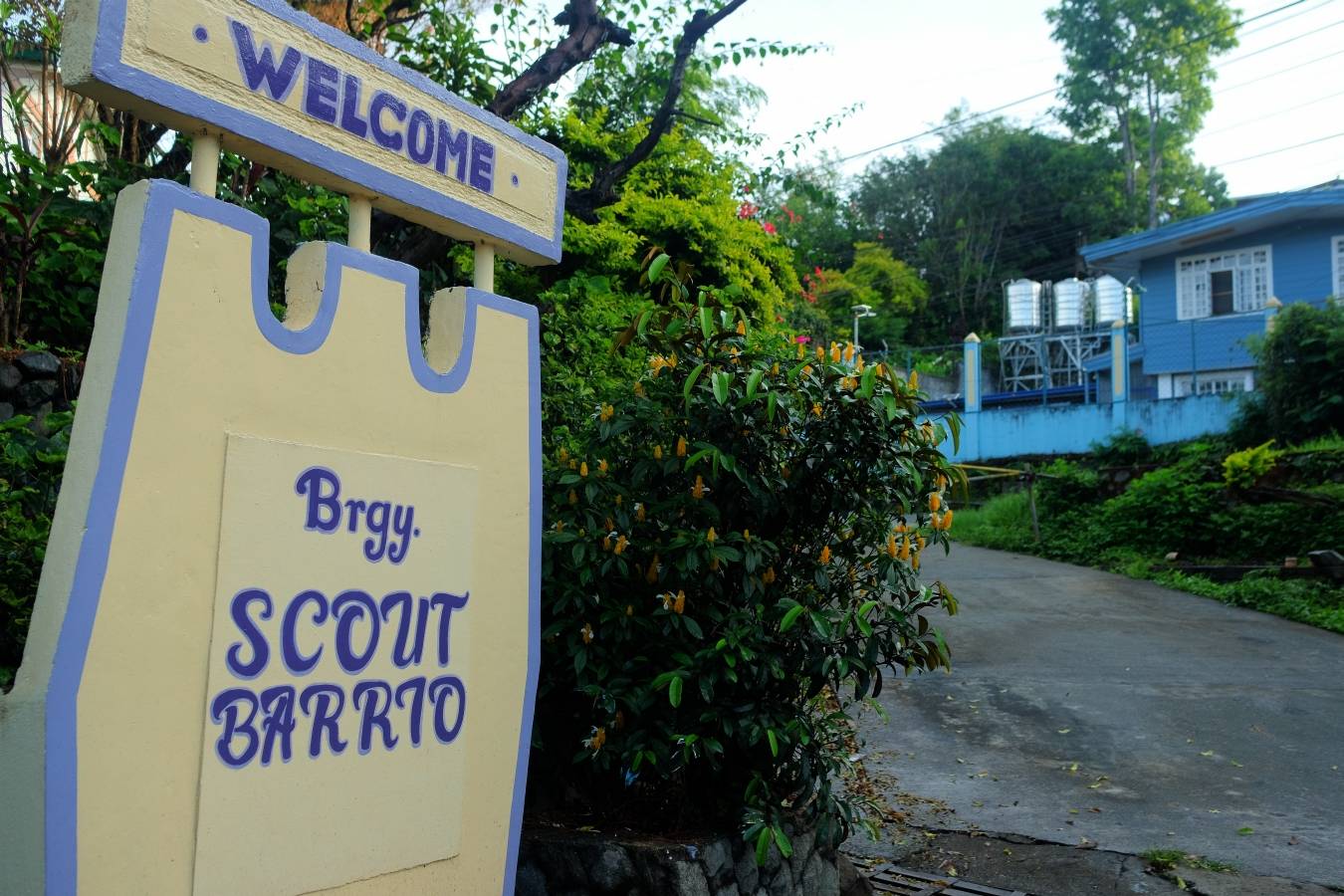Baguio execs ask Marcos to ‘complete’ John Hay barangay segregation

OWNERSHIP ISSUE Barangay Scout Barrio inside Camp John Hay in Baguio City, its entry marker shown in this June 8 photo, is home to the then civilian employees of the former American military camp now working alongside the city government to gain control over their open spaces now under the Bases Conversion and Development Authority. —Neil Clark Ongchanco
BAGUIO CITY, Philippines — Officials here have formally asked President Ferdinand Marcos Jr. to release to the Baguio city government all open spaces, such as roads, a school and public facilities in a barangay within Camp John Hay that remains under the control of the Bases Conversion and Development Authority (BCDA).
The city council, in a June 3 resolution, urged the President to transfer to the city 79,359 square meters of Barangay Scout Barrio, the first of 14 John Hay villages meant to be segregated from the former John Hay Air Station after all former American base lands in the country were placed under the jurisdiction of BCDA in 1992.
Segregation was one of 19 conditions set by the city government in 1994 in exchange for Baguio’s endorsement of a John Hay master development plan, which paved the way for the commercial development of 240 hectares inside the former American military camp.
READ: Bill splits Baguio villages inside Camp John Hay
Since 1955, Scout Barrio has been home to the then-civilian employees of Camp John Hay. It was put up while John Hay was governed by the US military under the Philippine-US Bases Agreement. Its residents were finally granted titles in 2001 through Executive Order No. 64 issued by then President and now Pampanga Rep. Gloria Macapagal Arroyo.
Article continues after this advertisementHowever, the same residents, in a letter to the city council on Nov. 13 last year, lamented that the “segregation of Scout Barrio is not yet complete.”
Article continues after this advertisementThe residents said EO 64 declared the whole 15.9 ha of Scout Barrio as a socialized housing site for residents but the rules drawn up to enforce the directive allocated only 8.1 ha for disposition. BCDA retained custody over the remaining areas.
READ: SC lifts freeze order on eviction of Camp John Hay developer
Correction
President Marcos could complete what Arroyo started by issuing a proclamation or another executive order that would relinquish the roads and open spaces to the city government, said Councilor Jose Molintas on Tuesday, referring to the resolution drafted by the council’s committees on urban planning, lands and housing, and of laws, human rights and justice.
Aside from Scout Barrio, BCDA is obliged to separate from John Hay the villages of Upper Dagsian, Lower Dagsian, Military Cut-Off, Hillside, Green Water, Camp 7 along Kennon Road, Lucnab, Santa Scholastica, Country Club Village, Loakan Apugan, Loakan Liwanag, Loakan Proper and Happy Hallow.
Happy Hallow is the state-recognized ancestral domain of Baguio’s indigenous peoples (IP), the Ibaloys.
The council’s resolution said the local government “is in the best position to administer the open spaces of the housing site and—in coordination with appropriate agencies like the Department of Human Settlements and Urban Development—to consider the use of the exempted unoccupied lots.”
The BCDA, it added, could hold onto “forest areas, waterways, road lots, including the Loakan Road, which is a national road, a basketball court, a children’s playground, the police station and barangay hall, a school site, the health center, and chapel.”
The remaining 13 barangays are subjects of a draft segregation law (House Bill No. 9428) sponsored by Baguio Rep. Marquez Go to include their respective open spaces, community properties and roads. Go’s measure still grants BCDA control over John Hay’s forest lands.
Loakan Liwanag Councilman Joselito Shontogan, who serves as his barangay’s IP mandatory representative, complained anew to the city council on June 13 that BCDA continues to restrict John Hay households from undertaking basic development like home repairs.
“Before we were happy [when the Americans managed John Hay]. Now we are lonely,” rued Shontogan. INQ